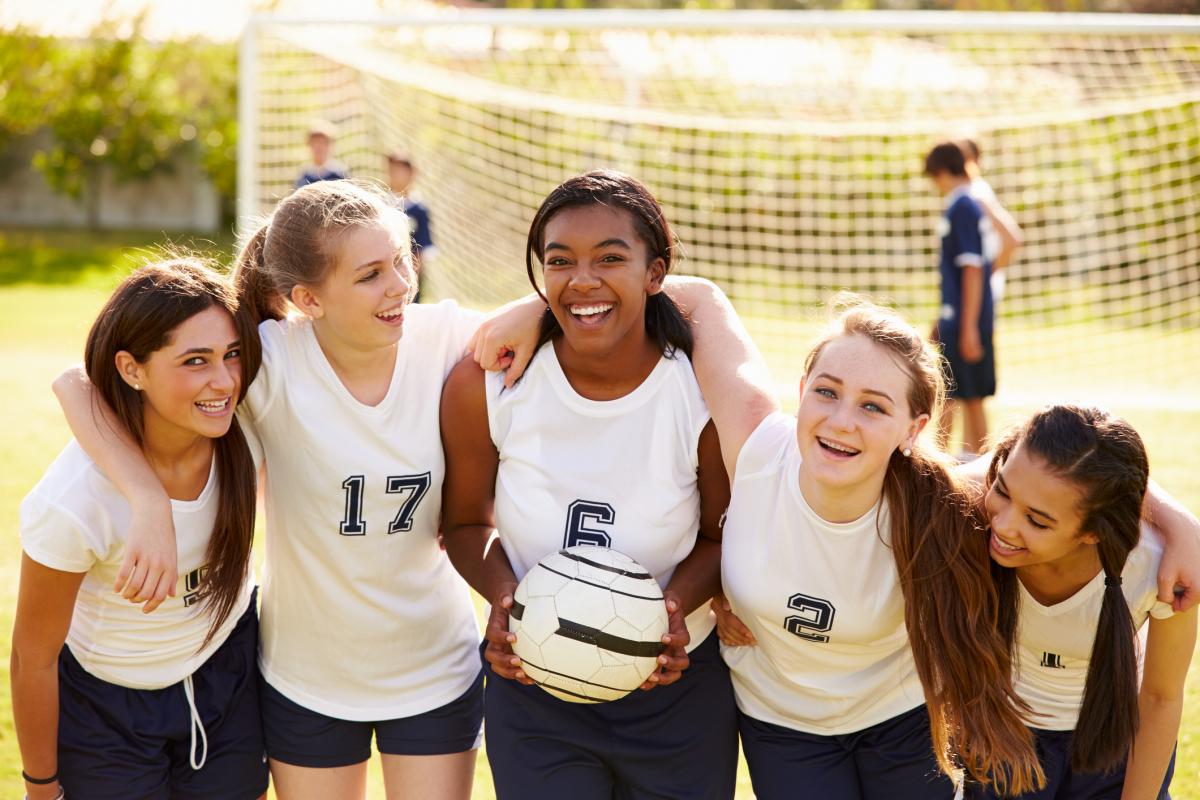4 tips for female athletes

No matter which sport a female athlete chooses, staying healthy involves more than practice and game time. Our tips for female athletes will help you focus on four important areas.
1. Build strong bones
Bone health is something many of our female patients start to worry about when they become older adults, but by that time, they have missed out on the optimal time for building bone. The majority of our bones are built during adolescence and they are the strongest in our early 30s. Bones start to break down and weaken after this age. For females, estrogen helps support bone strength. After menopause, however, estrogen levels plummet and osteoporosis risk skyrockets.
Think about bone health early. It is much easier to build strong bones as an adolescent than to repair weak bones as an adult.
We can help you heal and recover faster. Please call us at 800.922.0000 to schedule an appointment with one of our sports medicine specialists.
During this time, it's crucial for adolescent females to take in adequate calories, calcium and vitamin D, and to participate in weight-bearing exercises. Sports participation is a great way to increase our bone strength as adolescents, especially if we support bone growth with appropriate nutrition. If you are over 30, don’t panic. Weight-bearing exercise, along with proper levels of calcium and vitamin D, can help maintain bone strength.
2. Strengthen your core
The most common conditions and injuries we see in our female athletes are anterior cruciate ligament (ACL) tears, patellofemoral (knee) pain and instability and hip impingement. Building a strong core is one of the best things a female athlete can do to help prevent a variety of injuries. A strong core works to position the lower extremity to function efficiently and in a position that helps improve joint stability.

In addition, ACL injury-prevention programs have been developed and are now popular with female soccer and basketball teams. These prevention programs involve a dynamic warm up prior to practice and games that focus on neuromuscular and balance training. There are a number of different programs out there, but they all focus on stretching, strengthening, plyometrics, agility and balance. These programs are most effective prior to a knee injury and have been shown to significantly reduce ACL injuries in female athletes, with the biggest reduction seen in soccer players.
Core strength is often overlooked but a strong core can prevent injuries and can make most people better athletes.
Avoiding early sports specialization can help prevent many of the lower extremity overuse injuries we see. Sports specialization involves high-volume training in one sport. Playing one sport during childhood and early adolescent years can limit the development of athletic motor skills due to lack of variety. This can lead to muscle imbalances or differences in neuromuscular control, which may predispose athletes to overuse injuries.
3. Get adequate nutrition
Every athlete needs a slightly different calorie intake depending on their sport if they are in season/out of season and baseline metabolism. Most very high-level athletes work with a sports dietitian in order to optimize body composition while maintaining the caloric needs to support optimal performance.
Pay attention to how you feel and adjust as needed. Hunger is a cue that should be listened to. People who eat when they are hungry and stop when they are full are less likely to overeat (or pick a healthy food item instead of junk food). Paying attention to eating – instead of multitasking – can help an athlete identify those cues early. Frequent, smaller meals generally provide a more sustainable energy level for training needs. Menstrual cycles should not change with increased activity level. Menses that become lighter or less frequent are a sign that an athlete is not taking in adequate calories.
Recommended daily nutrient intake includes:
- Protein 1.2 to 2.0 gm/kg body weight (depending on sport)
- Vitamin D – 800 IU/day for an adult woman
- Calcium – 1600 m/day (four servings of dairy products)
- Iron – 18 mg/day – If you are concerned about inadequate iron, talk to your doctor about iron testing
4. Stay healthy in the offseason
Cross train. Make sure your strength and cardio training are comprehensive. By cross training, you avoid many overuse injuries and injuries caused by weak muscles you frequently don't use in your chosen sport.
Get some rest. It’s not a bad thing! While you should not sit on the couch during the entire off season, taking some time off for your body to heal is often a good thing. Particularly for high-level athletes who push themselves during the season, taking some time to recover allows your body to heal and become stronger again.
Eat a healthy diet. Don’t throw all of your hard work away by eating junk food during the off season. A well rounded, nutritious diet during this time helps muscle recovery and establishes nutrition stores for the next season.
Your health is important to us. Female athletes have health challenges unique to them. In every stage of an athlete’s life, we are here to help.
This article was written by Natalie Ronshaugen, MD.




